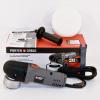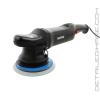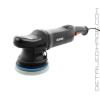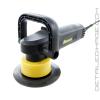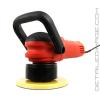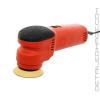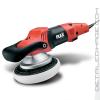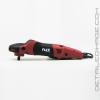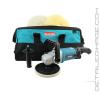Getting your car washed and waxed on a regular basis is one of the easiest ways to preserve its paint and keep it looking nice. Not only does it provide a point of pride for you, the driver, regular car washes help slow down the normal wear and tear that every vehicle’s exterior undergoes. Removing other environmental contaminants such as road salt, sap, tar and bugs in a timely manner also goes a long way to making your car’s paint and clear coat last longer.
But many wonder: How frequently should I wash my car? The answer depends first of all on personal preference and the vehicle you own. If you just purchased a brand-new luxury vehicle that still fumes with “new car” smell, you might want to wash your vehicle as frequently as once a week to keep it shiny and bright. But if you’re driving a beat-up rust bucket of truck, you may never wash your car.

For everyone else in the middle of those two extremes, a number of factors can influence the decision:
• Driving conditions: Do you live in a rural area with gravel or dirt roads or driveways? The dust kicked up and caked onto your paint means you’ll want to wash your car more frequently.
• Season: The grime and dust from road salt in the winter can do corrosive damage to your vehicle’s underbody and paint. Hitting bugs in the summer can have a similar effect.
• Parking location: If you’re not fortunate enough to park your car in a garage every night, parking underneath trees that drop sap or in areas prone to gatherings of birds that drop bird stuff should convince you to wash your car often.
• Commute distance and conditions: If your daily commute involves long distances on the highway, your car’s exterior will be exposed to more road grime and bug strikes than a vehicle with a short non-highway commute, necessitating washing your car more frequently.
At a minimum, it’s a good idea to get your vehicle washed at least every two to three weeks to keep dirt and grime from building up on the exterior. If your drive involves the conditions mentioned above, you may want to wash your vehicle more frequently.
But many wonder: How frequently should I wash my car? The answer depends first of all on personal preference and the vehicle you own. If you just purchased a brand-new luxury vehicle that still fumes with “new car” smell, you might want to wash your vehicle as frequently as once a week to keep it shiny and bright. But if you’re driving a beat-up rust bucket of truck, you may never wash your car.

Other factors like dark paint colors that show dirt and grime easily, can factor into how frequently you wash your car. (Photo courtesy of Angie's List member Walter K.)
• Driving conditions: Do you live in a rural area with gravel or dirt roads or driveways? The dust kicked up and caked onto your paint means you’ll want to wash your car more frequently.
• Season: The grime and dust from road salt in the winter can do corrosive damage to your vehicle’s underbody and paint. Hitting bugs in the summer can have a similar effect.
• Parking location: If you’re not fortunate enough to park your car in a garage every night, parking underneath trees that drop sap or in areas prone to gatherings of birds that drop bird stuff should convince you to wash your car often.
• Commute distance and conditions: If your daily commute involves long distances on the highway, your car’s exterior will be exposed to more road grime and bug strikes than a vehicle with a short non-highway commute, necessitating washing your car more frequently.
At a minimum, it’s a good idea to get your vehicle washed at least every two to three weeks to keep dirt and grime from building up on the exterior. If your drive involves the conditions mentioned above, you may want to wash your vehicle more frequently.
Many drivers opt for the convenience of a drive-through or automatic car wash. However, not all car washes are created equal. In fact, some automatic car washes – especially those that use rotating brushes or agitating cloths - can damage your vehicle’s paint.
Brushes or cloths that are too firm or contain built-up dirt or debris can actually scratch your vehicle. It takes research on the driver’s part to avoid damaging car washes by asking the car wash operator about how often the brushes or cloths are cleaned or replaced. If they’re changed infrequently or not at all, consider taking your vehicle elsewhere or using a different style of car wash.

Car washes that offer hand washes, hand washing your vehicle yourself or having your vehicle hand washed by an automotive detailing shop are all options to avoid damage from automatic car washes.
If you choose the DIY route, follow these steps to get the deep clean you’re looking for:
1. Pick the right spot
Avoid washing your car in direct sunlight or on a hot day. When you wash a car on hot day in direct sunlight, the water will dry very quickly, which can leave spots on the paint surface.
2. Check your water
The main ingredient in a car wash is obvious: water. But are you using the right kind of water? If your water is “hard” or high in mineral content, you may want to use a self-service car wash or avoid washing your car yourself altogether. Hard water also has a tendency to leave spots on the paint surface as it dries.
3. Get the right materials
Use a soap or detergent product made for washing cars, not dish soap. Dish soap can remove or cloud wax and polish coatings, detracting from the finish of the car. You can find the right materials, including car wash detergent, sponges, washing mitts and microfiber towels for drying at your local automotive retail store.
4. Spray it down
Start the process by spraying down the car with a garden hose, preferably with a car wash attachment or a higher-pressure nozzle. You can also use a pressure washer if available, but be careful to use a low pressure setting, as water under high pressure can actually blast away the protective clear coat or paint. Spray down the car thoroughly to remove any excess or heavily built-up debris.
5. Soap it up
Mix your auto detergent and water in a bucket in the ratio described on the bottle. Using too much soap can leave a cloudy surface or excessive water marks. Using your sponge or wash mitt, give the car a good scrubbing starting with the roof and working your way down. If the water in the bucket gets too grimy, change it out for fresh soap and water if necessary.
6. Rinse and repeat
Now that you’ve got your car’s body cleaned up nicely, make sure to rinse all those soapy suds as thoroughly as possible. You may want to repeat the process on areas that are particularly vulnerable to grime and bug junk such as the front grille. Next, repeat the process on the vehicle wheels using a heavy brush; using specialty tire grime cleaners is also an option.
7. Towel it off
Before the now-rinsed vehicle has a chance to dry, use a microfiber or other soft cloth towel to soak up any remaining moisture. Be sure to use a towel made from a lint-free fabric to prevent your car’s surface from becoming a lint trap.
8. Wax the ride
After giving your car a nice wash, it is time to go to the next step and do a wax to keep the vehicle as beautiful as possible. There are a number of factors to take note of when it comes to waxing a vehicle, and these factors start with the kind of wax you use. Different wax options include liquid, soft, hard and polymer. Polymer is different in that it is not a wax but another material that claims to hold up longer than wax. Liquid wax is easy to apply but does not last as long, while hard wax takes a longer time to apply but can stay for a long period. Soft wax falls between liquid and hard wax in terms of ease of use and duration.
Most waxes will include an applicator pad, but a soft cloth rag can be used if applicator pads are not available. Get some of the wax on an applicator or cloth rag and apply in vertical motions, going back and forth over the vehicle until a slight haze shows up. Use a microfiber cloth with no pressure to remove the haze of the wax. Apply and remove hard waxes by section to keep the hard wax from hardening too much, and be sure to exercise caution when breaking away hard wax deposits in case you waited too long for the hard wax to dry.
Brushes or cloths that are too firm or contain built-up dirt or debris can actually scratch your vehicle. It takes research on the driver’s part to avoid damaging car washes by asking the car wash operator about how often the brushes or cloths are cleaned or replaced. If they’re changed infrequently or not at all, consider taking your vehicle elsewhere or using a different style of car wash.

Some auto detail shops offer the option of washing and detailing your car in your driveway. (Photo courtesy of Angie's List member Luis D.)
If you choose the DIY route, follow these steps to get the deep clean you’re looking for:
1. Pick the right spot
Avoid washing your car in direct sunlight or on a hot day. When you wash a car on hot day in direct sunlight, the water will dry very quickly, which can leave spots on the paint surface.
2. Check your water
The main ingredient in a car wash is obvious: water. But are you using the right kind of water? If your water is “hard” or high in mineral content, you may want to use a self-service car wash or avoid washing your car yourself altogether. Hard water also has a tendency to leave spots on the paint surface as it dries.
3. Get the right materials
Use a soap or detergent product made for washing cars, not dish soap. Dish soap can remove or cloud wax and polish coatings, detracting from the finish of the car. You can find the right materials, including car wash detergent, sponges, washing mitts and microfiber towels for drying at your local automotive retail store.
4. Spray it down
Start the process by spraying down the car with a garden hose, preferably with a car wash attachment or a higher-pressure nozzle. You can also use a pressure washer if available, but be careful to use a low pressure setting, as water under high pressure can actually blast away the protective clear coat or paint. Spray down the car thoroughly to remove any excess or heavily built-up debris.
5. Soap it up
Mix your auto detergent and water in a bucket in the ratio described on the bottle. Using too much soap can leave a cloudy surface or excessive water marks. Using your sponge or wash mitt, give the car a good scrubbing starting with the roof and working your way down. If the water in the bucket gets too grimy, change it out for fresh soap and water if necessary.
6. Rinse and repeat
Now that you’ve got your car’s body cleaned up nicely, make sure to rinse all those soapy suds as thoroughly as possible. You may want to repeat the process on areas that are particularly vulnerable to grime and bug junk such as the front grille. Next, repeat the process on the vehicle wheels using a heavy brush; using specialty tire grime cleaners is also an option.
7. Towel it off
Before the now-rinsed vehicle has a chance to dry, use a microfiber or other soft cloth towel to soak up any remaining moisture. Be sure to use a towel made from a lint-free fabric to prevent your car’s surface from becoming a lint trap.
8. Wax the ride
After giving your car a nice wash, it is time to go to the next step and do a wax to keep the vehicle as beautiful as possible. There are a number of factors to take note of when it comes to waxing a vehicle, and these factors start with the kind of wax you use. Different wax options include liquid, soft, hard and polymer. Polymer is different in that it is not a wax but another material that claims to hold up longer than wax. Liquid wax is easy to apply but does not last as long, while hard wax takes a longer time to apply but can stay for a long period. Soft wax falls between liquid and hard wax in terms of ease of use and duration.
Most waxes will include an applicator pad, but a soft cloth rag can be used if applicator pads are not available. Get some of the wax on an applicator or cloth rag and apply in vertical motions, going back and forth over the vehicle until a slight haze shows up. Use a microfiber cloth with no pressure to remove the haze of the wax. Apply and remove hard waxes by section to keep the hard wax from hardening too much, and be sure to exercise caution when breaking away hard wax deposits in case you waited too long for the hard wax to dry.
By hiring an auto detailing company, you can largely avoid the possibility of damage to your vehicle as well as protect its appearance and value. One common misconception about auto detailing work – which can include washing, waxing and detailing the exterior and vacuuming, deep cleaning and detailing the interior – is that the service is prohibitively expensive.
However, if you consider that a washing, waxing or detailing work performed by a professional will significantly extend the life and improve the appearance of your vehicle, along with the fact that over the long term it can help retain the vehicle’s resale value, having the work done can prove to be a worthwhile investment.
The cost for many detailing services such as basic washes or interior cleanings can start at less than $100. More comprehensive services such as full exterior or interior details can cost several hundred dollars, while more advanced processes such as paint color correction or ding, dent or chip repairs may cost thousands.

Consider some of the benefits to having a professional provide detailing work for your car:
1. Improved resale value, higher selling price
A vehicle that’s been well maintained will always demand a higher selling price and this holds true for its appearance, too. An exterior that’s been cleaned and waxed regularly will show less wear and tear and the paint and clear coat will be more durable in the long run. Inside, regular thorough detailing such as vacuuming every nook and cranny and shampooing the carpets will help a car hold its new-car feel.
2. Convenience
Not only will you save yourself the time and hassle of washing, waxing and vacuuming your car by hiring a detailing professional, it can also be more convenient. Many auto detailing shops off pick-up and drop-off services as well as mobile detailing so your car never has to leave the driveway.
3. Fewer penalties when returning a leased vehicle
When returning a leased vehicle, lessees can often be penalized for not keeping up maintenance on the vehicle including the paint job and interior and upholstery. Having these items detailed on a regular basis can be an investment that saves you from ponying up cash for lease-return penalties.
4. Faster sale turnaround
Everybody loves that “new car” look, feel and smell – even if they’re buying a used car. A car with a recent thorough detail will sell faster than one that hasn’t been cleaned by a professional.
5. Peace of mind
Spills happen. Getting a professional to help remove any spills, stains or other accidents using tried-and-true methods not only saves you elbow grease, it also ensures the stain or spill has been removed or neutralized as effectively as possible.
However, if you consider that a washing, waxing or detailing work performed by a professional will significantly extend the life and improve the appearance of your vehicle, along with the fact that over the long term it can help retain the vehicle’s resale value, having the work done can prove to be a worthwhile investment.
The cost for many detailing services such as basic washes or interior cleanings can start at less than $100. More comprehensive services such as full exterior or interior details can cost several hundred dollars, while more advanced processes such as paint color correction or ding, dent or chip repairs may cost thousands.

Engine bay detailing is an option that can help increase your car's value at resale (Photo courtesy of Angie's List member Anthony M.)
1. Improved resale value, higher selling price
A vehicle that’s been well maintained will always demand a higher selling price and this holds true for its appearance, too. An exterior that’s been cleaned and waxed regularly will show less wear and tear and the paint and clear coat will be more durable in the long run. Inside, regular thorough detailing such as vacuuming every nook and cranny and shampooing the carpets will help a car hold its new-car feel.
2. Convenience
Not only will you save yourself the time and hassle of washing, waxing and vacuuming your car by hiring a detailing professional, it can also be more convenient. Many auto detailing shops off pick-up and drop-off services as well as mobile detailing so your car never has to leave the driveway.
3. Fewer penalties when returning a leased vehicle
When returning a leased vehicle, lessees can often be penalized for not keeping up maintenance on the vehicle including the paint job and interior and upholstery. Having these items detailed on a regular basis can be an investment that saves you from ponying up cash for lease-return penalties.
4. Faster sale turnaround
Everybody loves that “new car” look, feel and smell – even if they’re buying a used car. A car with a recent thorough detail will sell faster than one that hasn’t been cleaned by a professional.
5. Peace of mind
Spills happen. Getting a professional to help remove any spills, stains or other accidents using tried-and-true methods not only saves you elbow grease, it also ensures the stain or spill has been removed or neutralized as effectively as possible.
No matter the vehicle, every car is susceptible to the dangers of the roads. Flying road debris kicked up by other drivers’ tires, door dings in parking lots and corrosive road salt are just a few dangers most drivers and their cars encounter on a regular basis. Try these tips if you’ve noticed minor imperfections in your car’s exterior
1. Minor dents or dings
The key to removing a dent or ding is to apply a force that’s equal and opposite to the force that damaged the metal. Some repairs sometimes be accomplished by pulling sharply on the panel with a bathroom plunger, but more often, dents have to be pounded out from the back side with special tools. For smaller dents or dings, ask your auto detailer if they offer paintless dent repair; larger dents or dings should be repaired by an auto body shop.

2. Minor scratches
Repairing a minor scratch in the paint involves removing a small amount of paint in the surrounding area. Since minor scratches are relatively shallow and may only penetrate the clear coat even penetrate to the pigmented paint layer. In that case, you need to apply a rubbing compound and gently buff or until the scratches are no longer noticeable.
If there’s a significant amount of minor scratches over a wide area of the car’s body, more comprehensive and costly repairs may be necessary.
3. Major scratches
Larger or deeper scratches typically penetrate several layers of paint or all the way to the sheet metal beneath the paint. If a scratch penetrates all the way to the base coat or bare metal, it can't be buffed out. Applying a small amount touch-up paint can prevent rust damage, but the only way to really fix the problem is to reapply new paint, which may be best accomplished by auto painting specialist or body shop
4. Swirl marks
Swirl marks are typically scratches that were caused by an overenthusiastic buffing job. If you lean into a power buffer, it’s very easy to leave rough scratches that take the form of ugly swirl marks.
The easiest way to remove swirl marks is to use a dual-action polisher with foam pads. The key is to remove the smallest amount of paint necessary to eliminate the swirl scratches.
(from: http://www.angieslist.com/auto-services/car-washes-auto-detailing.htm)
1. Minor dents or dings
The key to removing a dent or ding is to apply a force that’s equal and opposite to the force that damaged the metal. Some repairs sometimes be accomplished by pulling sharply on the panel with a bathroom plunger, but more often, dents have to be pounded out from the back side with special tools. For smaller dents or dings, ask your auto detailer if they offer paintless dent repair; larger dents or dings should be repaired by an auto body shop.

Tackling minor paint imperfections, especially for older vehicles, can significantly improve resale value. (Photo courtesy of Angie's List member Dabney T.)
Repairing a minor scratch in the paint involves removing a small amount of paint in the surrounding area. Since minor scratches are relatively shallow and may only penetrate the clear coat even penetrate to the pigmented paint layer. In that case, you need to apply a rubbing compound and gently buff or until the scratches are no longer noticeable.
If there’s a significant amount of minor scratches over a wide area of the car’s body, more comprehensive and costly repairs may be necessary.
3. Major scratches
Larger or deeper scratches typically penetrate several layers of paint or all the way to the sheet metal beneath the paint. If a scratch penetrates all the way to the base coat or bare metal, it can't be buffed out. Applying a small amount touch-up paint can prevent rust damage, but the only way to really fix the problem is to reapply new paint, which may be best accomplished by auto painting specialist or body shop
4. Swirl marks
Swirl marks are typically scratches that were caused by an overenthusiastic buffing job. If you lean into a power buffer, it’s very easy to leave rough scratches that take the form of ugly swirl marks.
The easiest way to remove swirl marks is to use a dual-action polisher with foam pads. The key is to remove the smallest amount of paint necessary to eliminate the swirl scratches.
(from: http://www.angieslist.com/auto-services/car-washes-auto-detailing.htm)
